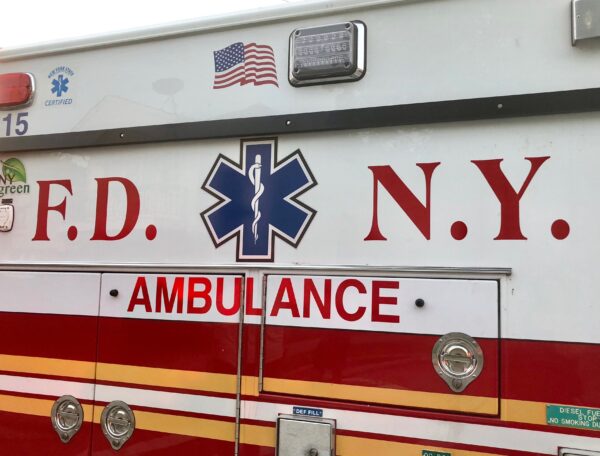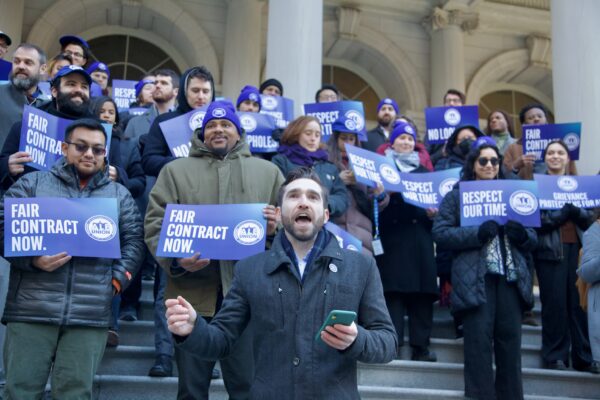Labor Day – A Holiday Born Out of a Brutal History
September 5, 2011
On a beautiful Tuesday morning 129 years ago, responding to a call issued by the New York City Central Labor Union, thousands of workers marched up Broadway in New York City. Led by a marching band from the Jewelers Union of Newark, the parade marched from City Hall, past a reviewing stand at Union Square, to the Reservoir Park at 42nd Street.
"The windows and roofs and even the lamp posts and awning frames were occupied by persons anxious to get a good view of the first parade in New York of workingmen of all trades united in one organization,” according to the New York Tribune that year.
It was New York’s first Labor Day parade – September 5, 1882. After the parade, 25,000 workers gathered at Wendel's Elm Park at 92nd Street and Ninth Avenue, where they enjoyed speeches from labor leaders and a picnic with their families that lasted late into the evening, with plentiful cigars and "lager beer kegs… mounted in every conceivable place," according to a history by the U.S. Dept. of Labor. The parade went off peacefully, despite police fears that workers would riot, and in contrast to often brutal confrontations in that era between workers and the forces sent to clear the streets.
Having parades in September became widespread in the years that followed. The first state to recognize Labor Day was in the far West — Oregon, in 1887. Later that year, Colorado, Massachusetts, New Jersey and New York passed similar legislation. By 1894, 23 of the 44 states officially recognized Labor Day. And that year, Congress passed an act making the first Monday in September a legal holiday and on June 28, 1894, President Grover Cleveland signed it into law.
Some historians believe that President Cleveland and the Congress supported Labor Day thinking it would help deflect support for May Day protests organized by radical elements. Eight years earlier, a call had gone out for a general strike to begin on May 1, 1886 calling for the eight-hour workday. In Chicago 40,000 workers responded. An unknown person at a workers’ rally threw a bomb and a police officer was killed. The government rounded up the Anarchist leadership of the workers. Six weeks later they were tried on the charge of murdering the policeman. Without any evidence of their participation in the crime, the defendants were found guilty and all but one sentenced to death. Eventually most were hanged. May 1st became an annual day of solidarity with the Haymarket Martyrs in the United States and around the world.
It is also thought that Congress and President Cleveland made Labor Day a federal holiday in the summer of 1894 to placate an angry labor movement. Remarkably, the nation was in the grip of a bitter national railway strike that was to be crushed only a few days later when the President sent 12,000 troops to brutally suppress the workers.
The strike began earlier that month when 3,000 workers spontaneously struck the Pullman Palace Car Company outside of Chicago in response to harsh wage cuts instituted because of the economic panic of 1893. Speculation, sharp business practices and a collapse of the money system created a credit crunch causing a significant portion of the banking and railroad industries to collapse, bringing about the worst economic depression experienced by the nation until the Great Depression of 1929. Twenty percent of the workforce was unemployed. Demand for Pullman’s sleeping cars collapsed.
The American Railway Union, led by Eugene V. Debs, supported the strike with a boycott. The union refused to run trains operating with Pullman cars. Pullman responded by locking out its workers. Debs threatened to strike the railroads if switchmen were disciplined for refusing to attach Pullman cars to the trains. Soon 125,000 railway workers went on strike against 29 railroads operating on tracks running through Chicago. This shut down the entire national railway system. The railroads began to hire strikebreakers. Other workers conducted sympathy strikes and large gangs of workmen began physically blocking railroads and attacking strikebreakers.
Richard Olney, President Cleveland’s Attorney General and a former general counsel to one of the large railroads, ordered prosecutors to go into court to enjoin the strikers on the pretext that the strike was interfering with the delivery of the U.S. mail. (His actions served as legal precedent for what later became a favorite tactic of employers seeking to break strikes until 1932 when Congress passed the Norris-LaGuardia Act outlawing federal courts from enjoining peaceful strike action.) When the strikers did not obey the court order, U.S. Marshals and the Army were sent in.
The Chicago Times reported on the events, “Company C, Second Regiment… disciplined a mob of rioters yesterday afternoon… The police assisted and… finished the job. There is no means of knowing how many rioters were killed or wounded.”
When rocks were thrown at the troops, the command was given to fire on the 5,000 strikers. In Howard Zinn’s A People’s History of the United States he writes,
The command to charge was given… A dozen men in the front line of rioters received bayonet wounds… A wire fence enclosed the track. The rioters had forgotten it; when they turned to fly they were caught in a trap. The police were not inclined to be merciful… The ground over which the fight had occurred was like a battlefield. The men shot by the troops and police lay about like logs.
Thirteen were killed, 53 wounded, 700 arrested. As many as 34 were dead by the time the strike was crushed.
Debs served six months in jail for not obeying the injunction, which ordered him not to speak in support of the strike. The American Railway Union was smashed and ceased to exist.
But the sacrifice that Debs and others made for the benefit of American workers lived on as the labor movement continued to grow, eventually achieving the eight-hour workday and other essential reforms. From that point on Labor Day became a holiday recognized throughout the nation, one that we continue to celebrate today, every first Monday in September.
Larry Cary, Esq. is a past president of the New York Labor History Association. He is to receive the Association’s John Commerford Labor Education Award this December.



